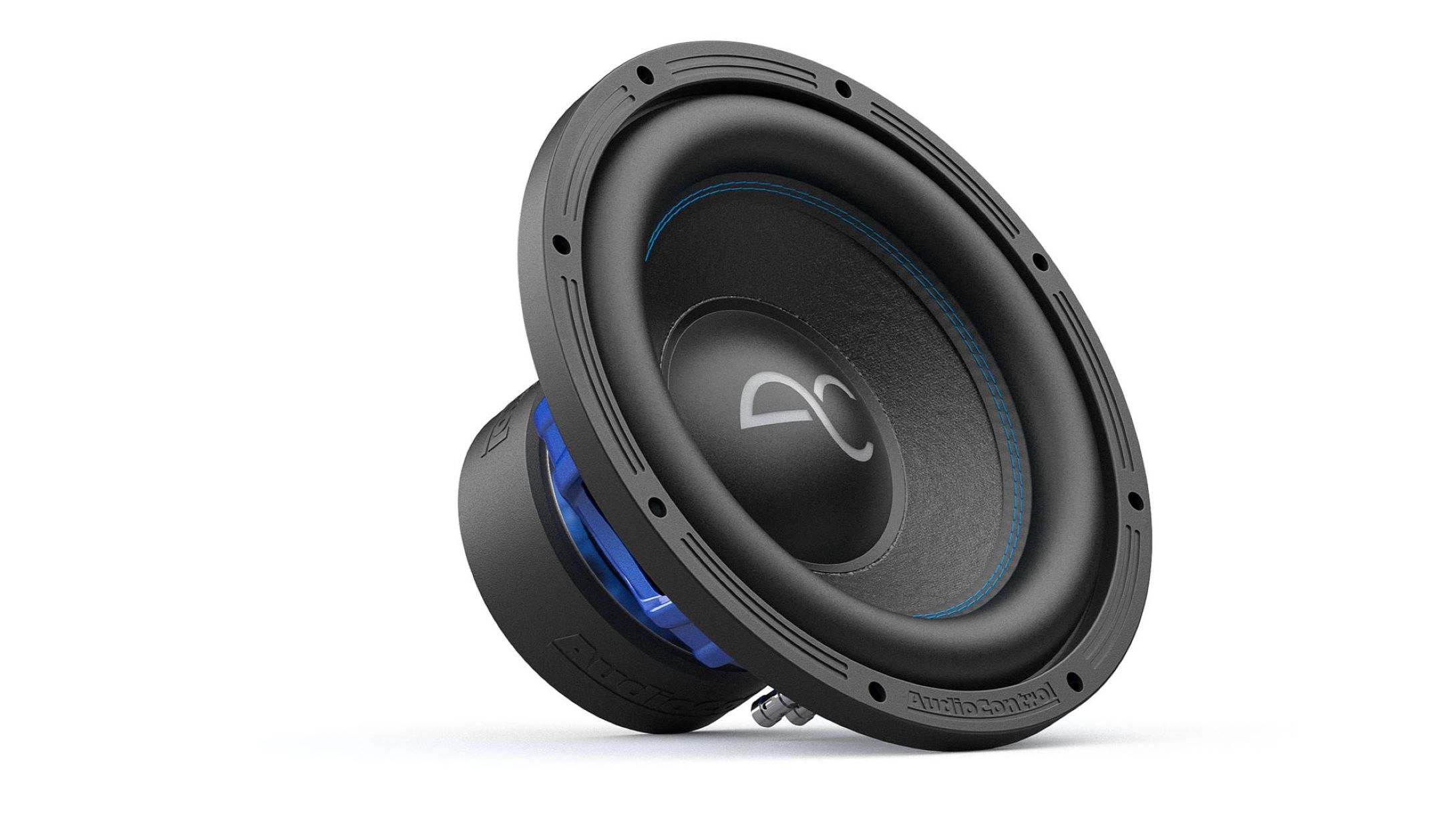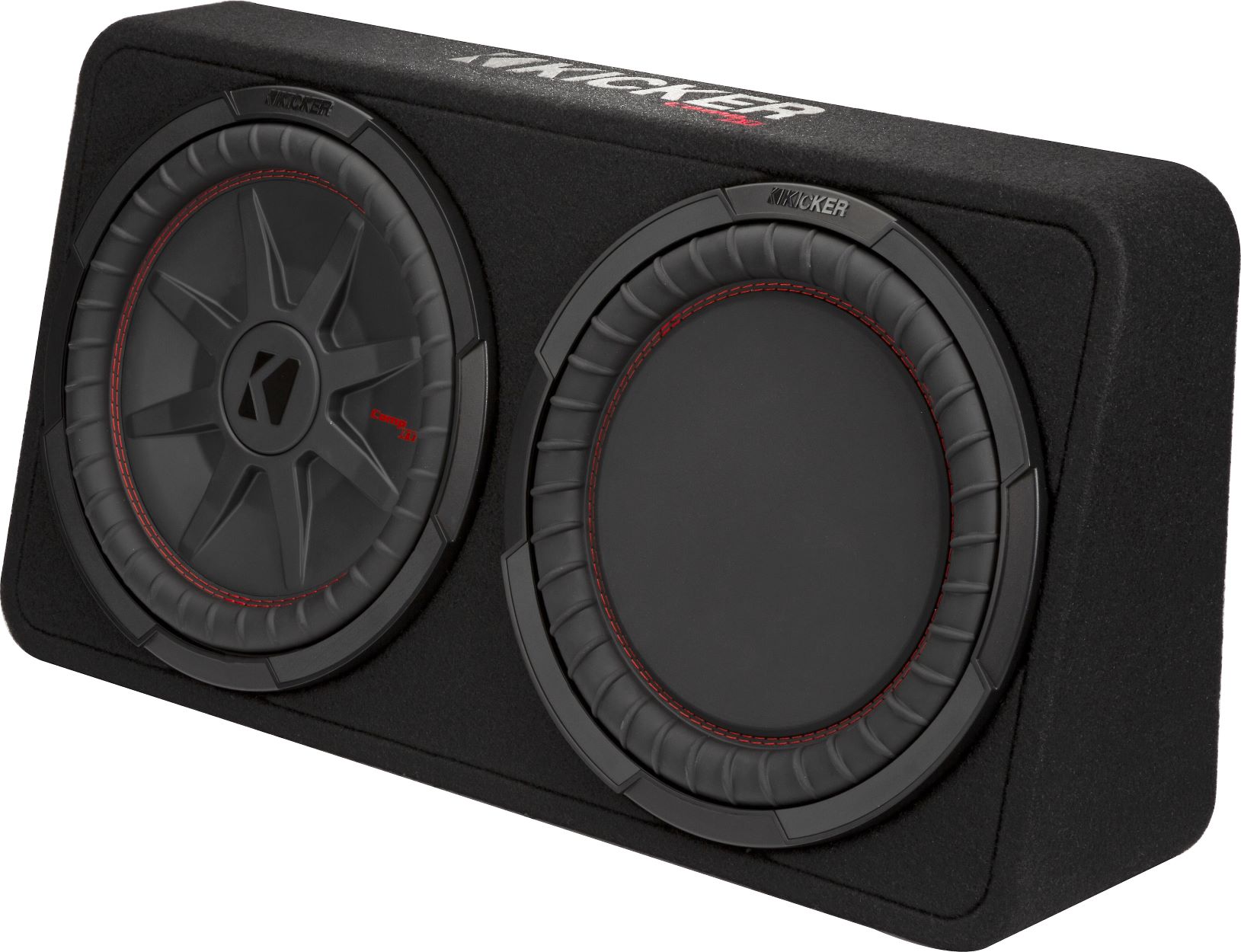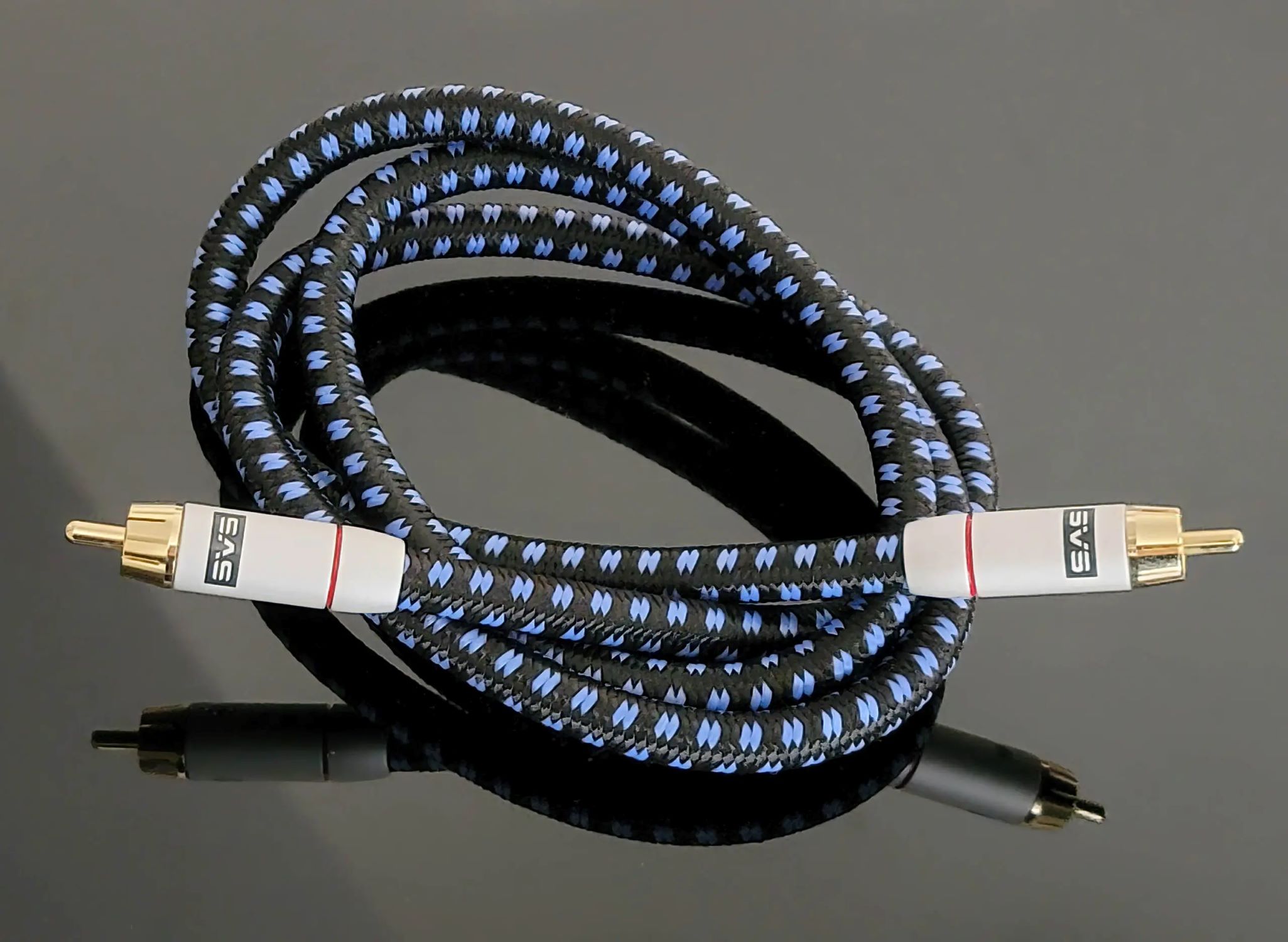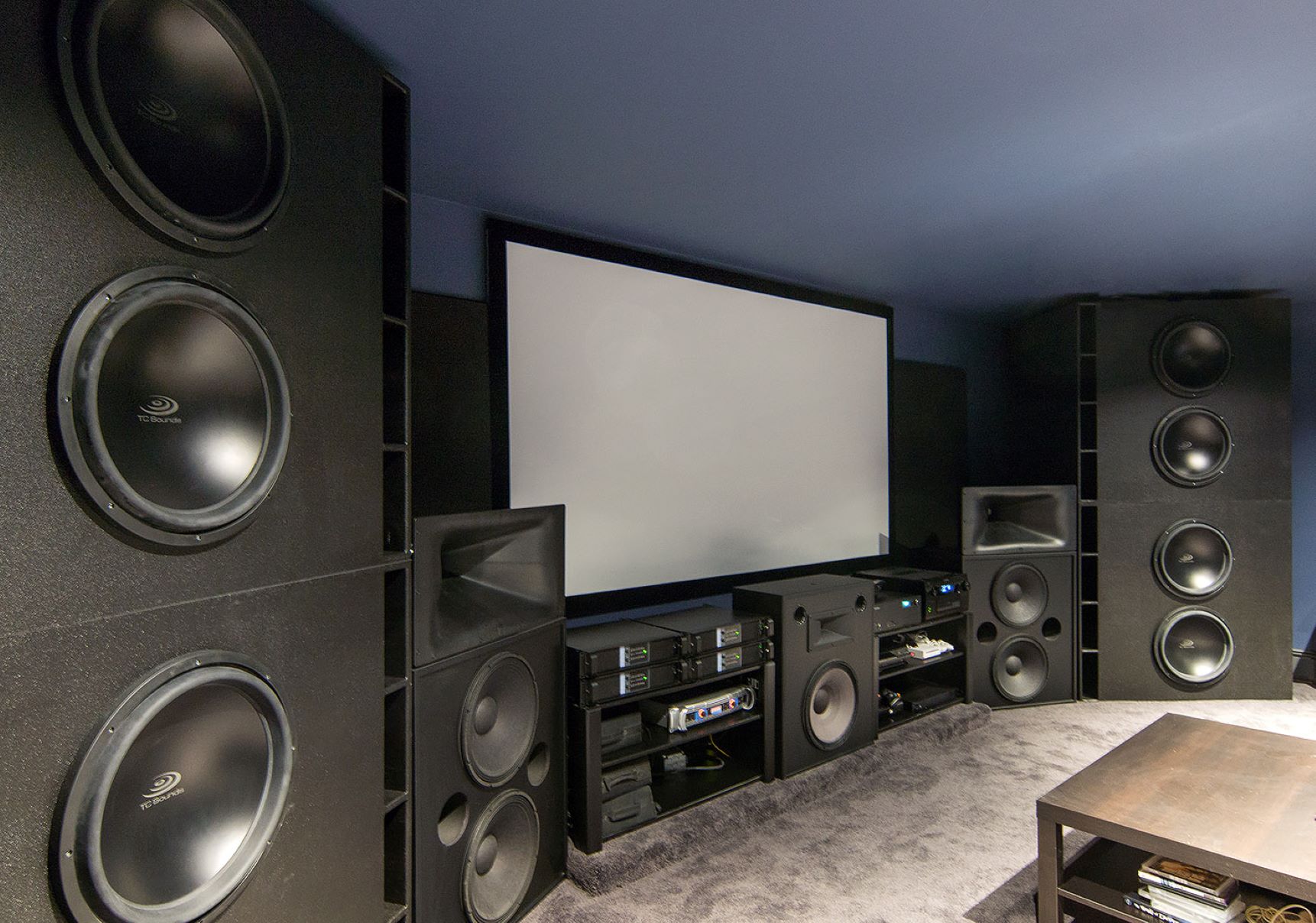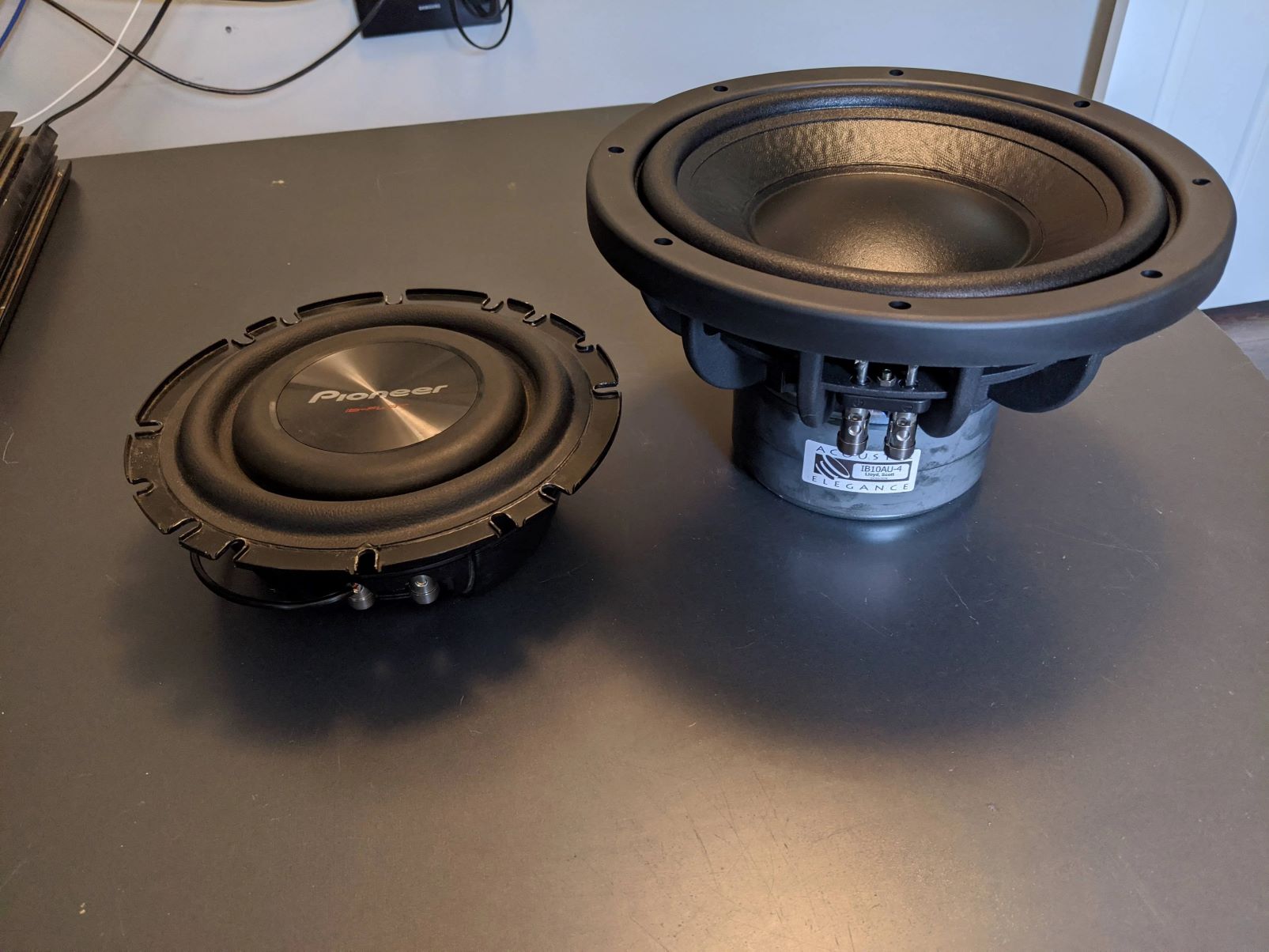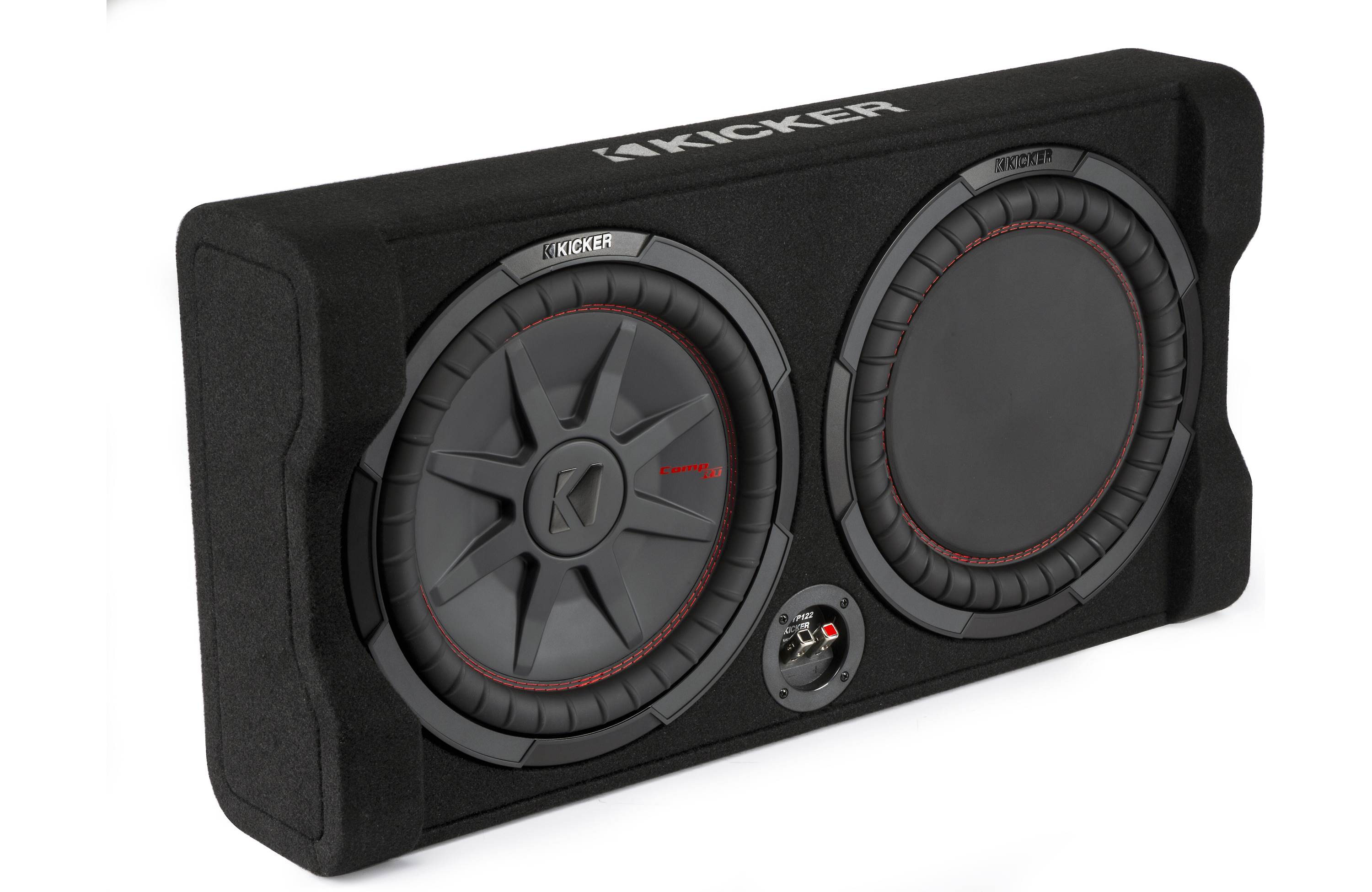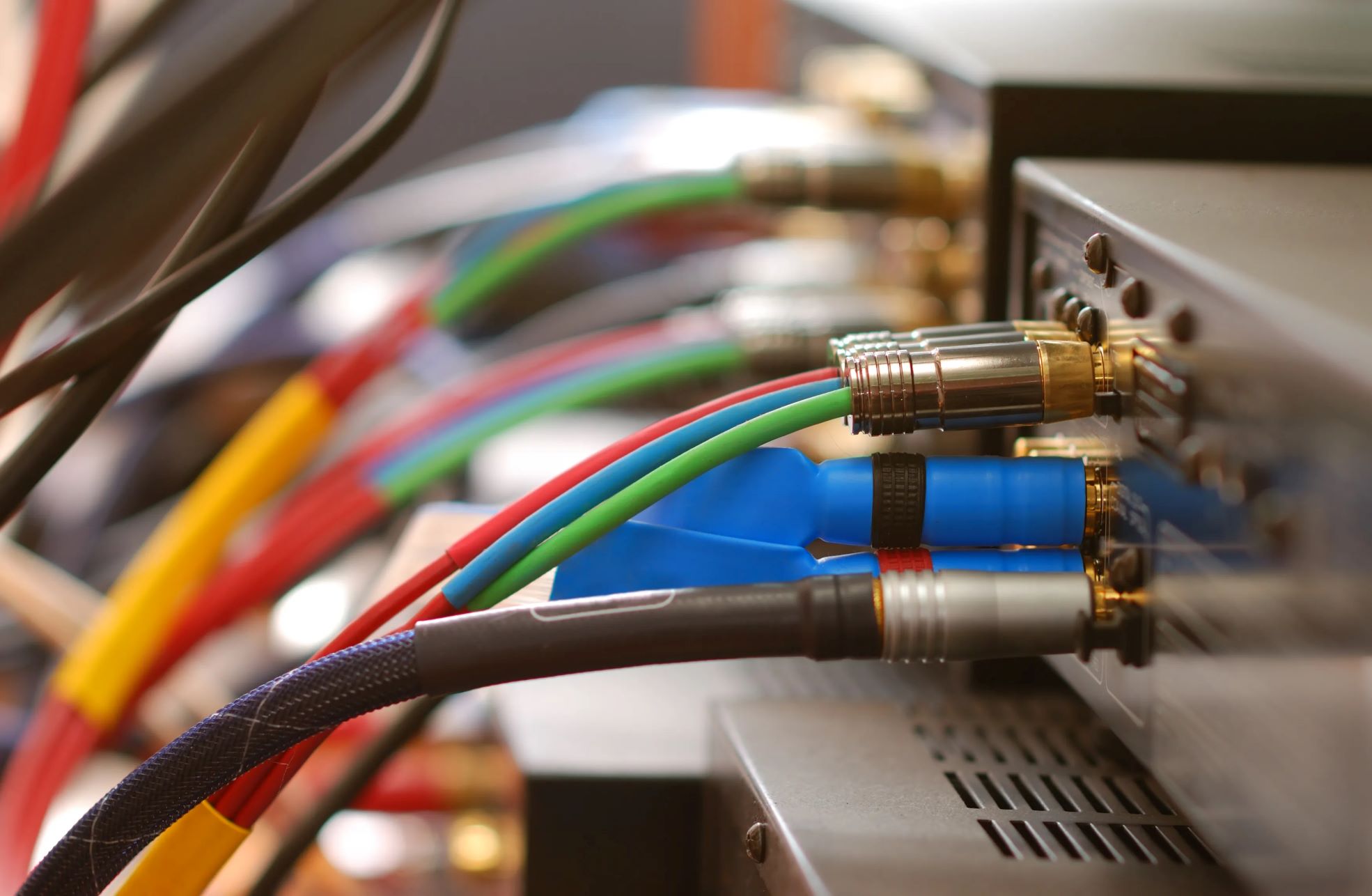Home>Devices & Equipment>Subwoofer>What Is A Subwoofer For


Subwoofer
What Is A Subwoofer For
Published: January 20, 2024
Discover the purpose and benefits of a subwoofer. Learn how adding a subwoofer to your audio system can enhance bass performance and overall sound quality.
(Many of the links in this article redirect to a specific reviewed product. Your purchase of these products through affiliate links helps to generate commission for AudioLover.com, at no extra cost. Learn more)
Table of Contents
Introduction
Welcome to the world of subwoofers, where low frequencies come alive and your audio experience reaches new depths. A subwoofer is an essential component of any audio system, designed specifically to reproduce the lowest range of frequencies with precision and power. Whether you’re a music enthusiast looking to enhance your listening experience or a home theater enthusiast seeking that rumbling cinematic bass, a subwoofer is the missing piece that brings your sound system to life.
The purpose of this article is to provide you with a comprehensive understanding of subwoofers and their role in audio reproduction. We’ll delve into the science behind low frequencies, explore how subwoofers work, discuss different types of subwoofers, and discover the benefits they offer. Additionally, we’ll provide some key considerations to keep in mind when choosing a subwoofer, as well as troubleshoot common issues users may encounter.
So, if you’re ready to dive into the world of subwoofers and discover the secrets behind booming bass and heart-pounding lows, let’s get started!
The Purpose of a Subwoofer
When it comes to audio reproduction, the purpose of a subwoofer is to accurately reproduce the lowest frequencies in the audio spectrum. These low frequencies, often referred to as bass, add depth, impact, and realism to music, movies, and other audio content. While regular speakers can reproduce a wide range of frequencies, they often fall short when it comes to producing the deep and powerful bass that resonates in our bodies and immerses us in the audio experience.
A subwoofer is specially designed to handle these low frequencies, typically ranging from 20Hz to 200Hz or even lower. By focusing on this specific frequency range, subwoofers can deliver a more precise and impactful bass response, filling a room with rich, rumbling vibrations that can be felt as well as heard.
One of the main reasons for incorporating a subwoofer into your audio setup is to achieve a more balanced and immersive sound. Without a subwoofer, the lower frequencies can often be underrepresented or muffled, leading to an incomplete audio experience. By adding a subwoofer, you’ll be able to hear the lows as they were intended, enhancing the overall clarity and depth of the sound.
Another key purpose of a subwoofer is to alleviate the workload on your main speakers. The reproduction of low frequencies requires a significant amount of power and excursion, which can put a strain on regular speakers. By offloading the bass frequencies to a dedicated subwoofer, the main speakers can focus on handling the midrange and higher frequencies more efficiently, resulting in cleaner and more detailed sound reproduction.
Moreover, a well-integrated subwoofer can create a seamless sonic experience, blending seamlessly with the main speakers and producing a cohesive soundstage. This not only enhances music and movies but also adds a new layer of realism to gaming and virtual reality experiences, allowing you to feel the impact of explosions, racing engines, or the deep thrum of a musical bassline.
Overall, the purpose of a subwoofer is to enrich your audio experience by accurately reproducing the lowest frequencies, adding depth, impact, and realism to your favorite media. Whether you’re a music lover, a movie enthusiast, or a gamer, a subwoofer is an essential component that elevates your audio setup to new heights.
Understanding Low Frequencies
Before we dive into the intricacies of subwoofers, it’s important to have a basic understanding of low frequencies and their role in audio reproduction. Low frequencies refer to the lower end of the audible sound spectrum, typically ranging from 20Hz to 200Hz. These frequencies are characterized by their long wavelengths and deep, rumbling tones.
Our ears perceive low frequencies differently than higher frequencies. While higher frequencies are more directional and easily attenuated by obstacles, low frequencies have a unique ability to propagate through walls and objects, filling a space with their deep vibrations. This is why a properly positioned subwoofer can be felt throughout a room, creating a truly immersive audio experience.
Low frequencies play a crucial role in adding depth, impact, and emotional resonance to audio content. In music, the bass frequencies provide the foundation for rhythm and create a sense of groove, while in movies and games, they enhance the atmosphere, intensify action scenes, and heighten suspense. Without accurate reproduction of low frequencies, the full impact and intended artistic expression of the audio may be lost.
Furthermore, understanding the frequency response range of different audio devices is important when considering the role of subwoofers. Regular speakers often have limited bass reproduction capabilities, with their frequency response typically starting above 50Hz or 60Hz. This means that lower frequencies may be weak or entirely absent when relying solely on these speakers to reproduce audio.
Subwoofers, on the other hand, are specifically designed to reproduce the low frequencies that regular speakers struggle with. By extending the frequency response range down to 20Hz or lower, subwoofers ensure that the deep bass elements of the audio are faithfully reproduced. This not only improves the overall sonic experience but also relieves the main speakers from the burden of producing low frequencies, enabling them to focus on delivering cleaner and more accurate midrange and high-frequency sounds.
In summary, low frequencies add depth, impact, and emotional resonance to audio content. They have the unique ability to fill a space with deep vibrations, creating an immersive audio experience. Regular speakers often struggle to reproduce low frequencies accurately, which is where subwoofers come in. By extending the frequency response range and handling the reproduction of low frequencies, subwoofers ensure that the full impact and intended artistic expression of audio are preserved.
How Subwoofers Work
Subwoofers are designed to accurately reproduce low-frequency sounds, but how do they actually work? Let’s take a closer look at the inner workings of a subwoofer to understand how they achieve their deep bass reproduction.
At the heart of a subwoofer is a speaker driver, typically known as a woofer. The woofer is larger and more robust than the drivers found in regular speakers, allowing it to move more air and produce lower frequencies with greater accuracy. The key components of a subwoofer driver are a sturdy cone made of lightweight materials and a voice coil attached to the cone.
The subwoofer driver is connected to an amplifier which provides the necessary electrical power for it to function effectively. The amplifier receives the low-frequency audio signals from the audio source and increases their power before sending them to the subwoofer driver. This amplification process ensures that the driver has enough energy to move the cone back and forth rapidly, creating the sound waves we hear as bass.
When the amplified audio signal reaches the voice coil within the subwoofer driver, it generates a magnetic field. This magnetic field interacts with a fixed magnet within the driver, causing the voice coil to move in a back-and-forth motion, known as the cone excursion. As the cone moves outward, it compresses the surrounding air, creating a rarefaction or low-pressure area in front of the cone. Conversely, as the cone moves inward, it creates a compression or high-pressure area.
This back-and-forth motion of the subwoofer driver’s cone generates sound waves in the air, reproducing the low-frequency content in the audio signal. These sound waves travel through the air and reach our ears, providing us with the deep and powerful bass that subwoofers are famous for.
It’s worth noting that subwoofers are often designed to operate within specific frequency ranges. Depending on the model, some subwoofers may focus on reproducing frequencies between 20Hz and 80Hz, while others may extend their range even lower. This specialization ensures that subwoofers can deliver accurate and impactful bass performance without compromising on the clarity and detail of higher frequencies.
In addition to the basic functionality of subwoofer drivers and amplification, many subwoofers incorporate advanced technologies such as passive radiators, ported enclosures, or sealed enclosures to enhance their performance. These additional features help to optimize the subwoofer’s bass response, increase efficiency, and reduce distortion.
In summary, subwoofers work by utilizing a specialized driver connected to an amplifier. The amplified electrical signals cause the driver’s cone to move back and forth, creating sound waves that reproduce the low-frequency content in the audio signal. The design and construction of subwoofers, along with various technological enhancements, allow them to deliver accurate, impactful, and immersive bass performance.
Types of Subwoofers
Subwoofers come in different types, each with its own unique characteristics and applications. Understanding the different types can help you choose the subwoofer that best suits your needs and preferences. Let’s explore some of the common types of subwoofers:
- Active Subwoofers: Active subwoofers, also known as powered subwoofers, have a built-in amplifier, which means they don’t require an external amplifier to operate. They have their own power source and typically feature controls for adjusting volume, crossover frequency, and phase. Active subwoofers are popular among users looking for convenience and simplicity, as they can easily be connected directly to a preamplifier or audio source.
- Passive Subwoofers: Unlike active subwoofers, passive subwoofers do not have a built-in amplifier. They rely on an external amplifier or receiver to provide power. Passive subwoofers are often used in more advanced audio systems where precise control over amplification and signal processing is desired. They require additional cables and connections to operate, but they offer flexibility in terms of customizing the amplification setup.
- Powered Subwoofers: Powered subwoofers are a combination of active and passive subwoofers. They have a built-in amplifier like active subwoofers, but they require a separate power source for operation, like passive subwoofers. Powered subwoofers offer a convenient solution by eliminating the need for an external amplifier and simplifying the setup process.
- Down-Firing Subwoofers: Down-firing subwoofers have their driver positioned facing the floor. The sound waves produced by the driver are directed downwards and bounce off the floor, which helps to enhance bass reproduction and create a more immersive experience. Down-firing subwoofers are ideal for rooms with carpeted floors or when you want to maximize the impact of bass vibrations.
- Front-Firing Subwoofers: Front-firing subwoofers have their driver positioned facing towards the front of the subwoofer enclosure. The sound waves are projected directly towards the listener, providing precise and focused bass reproduction. Front-firing subwoofers are versatile and suitable for various room configurations, making them a popular choice for many users.
- In-Wall or In-Ceiling Subwoofers: In-wall or in-ceiling subwoofers are designed to be mounted within walls or ceilings, providing a discreet and space-saving installation option. These subwoofers are often used in home theater systems or multi-room audio setups, where aesthetics and minimizing visible equipment are important factors. In-wall and in-ceiling subwoofers typically require professional installation for optimal performance.
It’s also worth mentioning that subwoofers can come in different enclosure designs, such as sealed, ported, or bandpass enclosures. Each enclosure type has its own benefits in terms of bass response, efficiency, and size. Sealed enclosures provide precise and accurate bass, while ported enclosures emphasize deeper bass extension. Bandpass enclosures offer a combination of both extended low-frequency response and efficiency.
When choosing the right subwoofer type for your audio system, consider factors such as your room size, preferred bass response, available space, and budget. Each type of subwoofer offers its own advantages and considerations, so take your time to research and find the one that best suits your needs and listening preferences.
Benefits of Using a Subwoofer
Investing in a subwoofer can greatly enhance your audio experience and provide a range of benefits that you won’t want to miss. Let’s explore some of the key advantages of using a subwoofer:
- Improved Bass Response: The most obvious benefit of using a subwoofer is the improved bass response. Subwoofers are specifically designed to handle low frequencies, allowing them to reproduce deep, rich bass with precision and power. This enhances the overall sonic experience by adding depth, impact, and realism that regular speakers simply cannot achieve on their own.
- Enhanced Audio Clarity: By offloading the low-frequency reproduction to a dedicated subwoofer, your main speakers are able to focus on producing midrange and high-frequency sounds with greater clarity and detail. This separation of frequencies ensures that each frequency range is reproduced accurately and without distortion, resulting in a cleaner and more realistic audio playback.
- Immersive Sound Experience: Subwoofers excel at creating a truly immersive sound experience. Whether you’re listening to music, watching a movie, or playing video games, a subwoofer transports you into the heart of the action. The deep, rumbling bass adds a physical dimension to the sound, making you feel as if you’re right in the middle of the performance or on the edge of your seat during intense cinematic moments.
- Balanced Audio Reproduction: Adding a subwoofer to your audio system helps to balance the frequency response and sonic performance. Regular speakers often struggle to reproduce accurate bass, resulting in an unbalanced audio presentation. By integrating a subwoofer, you can ensure that all frequency ranges are represented accurately, creating a more cohesive and enjoyable listening experience.
- Room-Filling Sound: Subwoofers have the ability to fill a room with sound, thanks to their ability to propagate low-frequency waves more effectively than regular speakers. The deep bass produced by a subwoofer envelops the entire space, eliminating any dead spots and ensuring that everyone in the room can experience the full impact of the audio content.
- Better Home Theater Experience: If you have a home theater setup, a subwoofer is an essential component. It adds that cinematic impact to movies and allows you to fully immerse yourself in the action. Explosions, earthquakes, and thunderous soundtracks come to life with the deep and powerful bass delivered by a subwoofer, giving you a truly theater-like experience in the comfort of your own home.
- Expanded Music Repertoire: A subwoofer not only enhances movies and home theater setups but also breathes new life into your music collection. From the thumping beats of electronic music to the resonating bass lines of jazz or rock, a subwoofer uncovers layers and nuances in your favorite tracks that you may have never noticed before. It allows you to experience the full range and artistry of the music as intended by the artist.
In summary, using a subwoofer provides numerous benefits, including improved bass response, enhanced audio clarity, immersive sound experience, balanced audio reproduction, room-filling sound, better home theater experience, and an expanded music repertoire. Whether you’re a music lover, a movie enthusiast, or simply crave an exceptional audio experience, a subwoofer is a valuable addition that can transform your listening environment and elevate your enjoyment of sound.
Considerations When Choosing a Subwoofer
Choosing the right subwoofer for your audio system involves considering several important factors to ensure the best possible performance and compatibility. Here are some key considerations to keep in mind when selecting a subwoofer:
- Room Size: Consider the size of the room where the subwoofer will be used. Larger rooms may require a more powerful subwoofer to fill the space with bass, while smaller rooms may benefit from a compact subwoofer that still delivers impactful sound without overwhelming the space.
- Frequency Response: Pay attention to the frequency response range of the subwoofer. A wider frequency response range allows for more accurate reproduction of low frequencies. Look for a subwoofer that can produce frequencies as low as 20Hz or lower, ensuring that you can experience the full impact of deep bass.
- Power Rating: Consider the power rating of the subwoofer, which is typically measured in watts. A higher power rating generally indicates a more powerful and capable subwoofer. Match the subwoofer’s power rating with the amplifier or receiver in your audio system to ensure compatibility and avoid overpowering or underpowering the subwoofer.
- Enclosure Type: Different enclosure types, such as sealed, ported, or bandpass, have distinct characteristics in terms of bass response, efficiency, and size. Consider the pros and cons of each enclosure type and choose the one that aligns with your desired bass performance and space limitations.
- Placement Options: Think about where the subwoofer will be placed in your room. Subwoofers can be placed either on the floor, in a corner, or even built into a wall or ceiling. Each placement option has its impact on bass response and room interaction, so consider the available space and room layout to determine the best placement for optimal performance.
- Integration with Existing Speakers: Ensure that the subwoofer integrates well with your existing speakers. Consider the frequency response and sound characteristics of your main speakers and look for a subwoofer that can seamlessly blend with them. A subwoofer should complement the overall sound, rather than overpowering or conflicting with the main speakers.
- Budget: Determine your budget for a subwoofer. There is a wide range of options available at various price points. Set a realistic budget and look for a subwoofer that offers the best combination of features, performance, and value within your price range.
- Brand Reputation and Reviews: Research the reputation of the brand and read reviews from other users or experts. Look for subwoofers from reputable manufacturers known for their quality and reliability. User and expert reviews can provide insights into the performance, durability, and overall satisfaction of different subwoofer models.
By considering these factors, you can make an informed decision when choosing a subwoofer that fits your specific requirements and preferences. Remember, it’s important to find a subwoofer that not only delivers impressive bass performance but also integrates seamlessly with your existing audio system to create a harmonious and enjoyable listening experience.
Common Subwoofer Terminology
When exploring subwoofers, you may come across several technical terms and acronyms that can be confusing if you’re not familiar with them. To help you navigate the world of subwoofers more confidently, here are some common terminology and their explanations:
- Frequency Response: The frequency response refers to the range of frequencies that a subwoofer or any audio device can reproduce. It is typically measured in Hertz (Hz) and represents the lowest and highest frequencies that the subwoofer can accurately reproduce.
- Crossover Frequency: The crossover frequency defines the point at which the subwoofer takes over the reproduction of low frequencies from the main speakers. It is usually adjustable and helps ensure a smooth transition between the subwoofer and the main speakers for a balanced sound blend.
- Phase: The phase setting of a subwoofer determines the alignment of its sound waves with the sound waves of the main speakers. Adjusting the phase can help ensure that the subwoofer’s output is in sync with the main speaker output, resulting in a more accurate and cohesive sound reproduction.
- Driver Size: The driver size refers to the diameter of the subwoofer’s cone or diaphragm. It is typically measured in inches. Larger driver sizes generally allow for greater bass output and better handling of low frequencies.
- Woofer: A woofer is another term used to describe the driver in a subwoofer. It is specifically designed to handle low frequencies and produce deep bass with accuracy and power.
- Amplifier Power: The amplifier power rating indicates the amount of electrical power that the subwoofer’s built-in or external amplifier can deliver to the woofer. It is typically measured in watts (W) and influences the overall loudness and dynamic range of the subwoofer.
- Sensitivity: Sensitivity refers to how efficiently the subwoofer converts electrical power into sound output. It is measured in decibels (dB). Higher sensitivity values indicate greater efficiency, meaning the subwoofer can produce louder sound levels with the same amount of power compared to one with lower sensitivity.
- Ported Enclosure: A ported enclosure, also called a bass-reflex enclosure, features a vent or port that enhances the bass response by utilizing the air movement inside the enclosure. The ported design allows for increased efficiency and improved low-frequency extension.
- Sealed Enclosure: A sealed enclosure, also known as an acoustic suspension enclosure, is a type of subwoofer enclosure design without any vents or ports. It provides accurate and tight bass response, but typically requires more amplifier power to produce the same output as a ported enclosure.
- Subwoofer Placement: Subwoofer placement refers to the positioning of the subwoofer within your room. Proper placement is crucial for achieving optimal bass response and avoiding undesirable resonances or cancellation effects. Common placement options include corners, along walls, or near the main listening area.
By familiarizing yourself with these common subwoofer terminologies, you will be better equipped to understand product specifications, make informed choices, and optimize the performance of your subwoofer within your audio system.
Setting Up and Configuring a Subwoofer
Properly setting up and configuring your subwoofer is essential to ensure optimal performance and integration with your audio system. Here are some steps to follow when setting up and configuring your subwoofer:
- Placement: Begin by identifying the ideal placement for your subwoofer. Common placement options include corners, along walls, or near the main listening area. Experiment with different positions to find the spot that provides the best bass response and integration with your main speakers.
- Connection: Connect the subwoofer to your audio system. Most subwoofers use a single RCA cable to connect to the subwoofer output of your AV receiver, preamplifier, or soundbar. Some subwoofers may also have speaker level inputs and outputs for connecting directly to the speaker terminals of your amplifier or receiver.
- Crossover Frequency: Set the crossover frequency on your subwoofer. The crossover frequency determines the point at which the subwoofer takes over the reproduction of low frequencies from the main speakers. Begin by setting the crossover frequency to around 80Hz, and adjust it based on the manufacturer’s recommendations and your personal preference or room acoustics.
- Phase Adjustment: Adjust the phase of the subwoofer if needed. Switch between 0 and 180 degrees and listen for the most optimal bass response. In some cases, reversing the phase can help align the subwoofer’s output with that of the main speakers, reducing any cancellation or phase interference.
- Volume Level: Set the volume level of the subwoofer to match the overall sound balance. Start by setting the volume around 50% and play some audio content with a good mix of bass. Adjust the volume level gradually until the bass integrates well with the main speakers, providing a cohesive and balanced sound.
- Room Acoustic Calibration: Some subwoofers and AV receivers offer room acoustic calibration systems, such as Audyssey or room correction EQ. Follow the manufacturer’s instructions to run these calibration processes, which analyze the acoustics of your room and adjust the subwoofer’s settings accordingly for optimal performance in your specific space.
- Subwoofer Isolation: Consider using subwoofer isolation pads or stands to reduce any vibrations or resonances that may affect the sound. These pads or stands help isolate the subwoofer from the floor or surrounding furniture, resulting in cleaner and tighter bass reproduction.
- Fine-Tuning: Take the time to fine-tune the subwoofer settings based on your listening preferences and the specific characteristics of your room. Experiment with different crossover frequencies, phase settings, and volume levels to ensure the best integration and bass performance for your specific setup.
Remember, every room and audio system is unique, so it may take some trial and error to find the optimal settings for your subwoofer. Be patient and use your ears as the ultimate guide, making adjustments until you achieve the desired sound quality and bass response.
Additionally, consult the user manual or manufacturer’s website for specific setup instructions and recommendations for your subwoofer model. Following their guidelines will help you get the most out of your subwoofer and ensure a satisfying audio experience.
Troubleshooting Subwoofer Issues
While subwoofers are designed to provide enhanced bass performance, they can occasionally encounter issues that affect their functionality or sound quality. Here are some common subwoofer issues and troubleshooting tips to help you resolve them:
- No Sound: If your subwoofer is not producing any sound, first check the power connection to ensure it is securely plugged in and receiving power. Make sure the power switch or button on the subwoofer is turned on. Verify that the audio cables are properly connected to the subwoofer and audio source, and that the volume is turned up on both the subwoofer and the audio source.
- Weak or Distorted Bass: If the bass from your subwoofer sounds weak or distorted, check that the crossover frequency and volume level are properly set. Adjust the crossover frequency to ensure a seamless transition between the subwoofer and the main speakers. Make sure the volume level is set appropriately to blend the subwoofer’s output with the rest of the audio system. Also, check for any audio processing settings on your amplifier or receiver that may be affecting the subwoofer’s performance.
- Intermittent or Cut-Out Sound: If the subwoofer’s sound cuts in and out or intermittently drops, check the audio connections to ensure they are secure and not loose. Examine the cables for any signs of damage or fraying. If using wireless connectivity, ensure that the wireless transmitter and the subwoofer are properly paired and within range of each other. Additionally, check the power supply and outlet to ensure a stable electrical connection.
- Excessive Vibration or Rattling: If your subwoofer produces excessive vibrations or rattling noises, it may not be properly isolated from its surroundings. Check that the subwoofer is placed on a stable surface, and consider using isolation pads or stands to minimize vibrations. If the issue persists, inspect the subwoofer’s enclosure for any loose parts or damaged drivers, and contact the manufacturer for further assistance or repairs.
- Phase or Integration Issues: If the bass from your subwoofer sounds muffled or out of sync with the main speakers, check the phase settings on the subwoofer. Experiment with different phase settings (0 and 180 degrees) to find the option that provides the most cohesive integration with the main speakers. Additionally, make sure the crossover frequency is set appropriately and that the subwoofer’s volume level is balanced with the rest of the audio system.
- Unwanted Hum or Noise: If you notice a constant hum or noise from the subwoofer, it may be caused by electrical interference. Try moving the subwoofer away from other electronic devices or sources of interference, and ensure that the subwoofer’s power cable is not running parallel to any audio cables. If the problem persists, consider using power line filters or a different power outlet to minimize electrical noise.
- Software or Firmware Updates: Check the manufacturer’s website for any software or firmware updates for your subwoofer. Sometimes, issues can be resolved or improved by updating the subwoofer’s software or firmware to the latest version. Follow the manufacturer’s instructions to perform the update, ensuring that you carefully follow all necessary steps to prevent any potential errors or complications.
If you are unable to resolve the issue with your subwoofer using these troubleshooting tips, consult the user manual or reach out to the manufacturer’s customer support for further assistance. They will have the expertise to help you diagnose and resolve any specific issues related to your subwoofer model.
Conclusion
Subwoofers are a valuable addition to any audio system, providing enhanced bass performance and elevating the overall audio experience. By accurately reproducing low frequencies, subwoofers add depth, impact, and realism to music, movies, and gaming, immersing us in the sound and creating a powerful sonic experience.
In this article, we explored the purpose of a subwoofer and how it enhances our audio enjoyment. We learned about the importance of understanding low frequencies and how subwoofers work to reproduce them accurately. We discussed the different types of subwoofers available, as well as the benefits they offer in terms of balanced sound reproduction, immersive sound experience, and improved audio clarity.
The considerations when choosing a subwoofer helped us understand the factors that influence the selection process, such as room size, frequency response, power rating, and placement options. We also familiarized ourselves with common subwoofer terminology, enabling us to better understand specifications and technical details when evaluating different models.
Setting up and configuring a subwoofer can be crucial to ensure optimal performance. Following the recommended guidelines for placement, connection, crossover frequency, phase adjustment, volume level, and fine-tuning will help us achieve the best sound integration and bass response in our specific listening environment.
Finally, we explored troubleshooting tips for common subwoofer issues, including no sound, weak or distorted bass, intermittent sound, excessive vibration or rattling, phase or integration issues, unwanted hum or noise, and the possibility of software or firmware updates.
In conclusion, a well-chosen and properly configured subwoofer can greatly enhance the audio enjoyment in your home. Whether you’re immersed in the rumbling bass of your favorite music, experiencing the thrilling impact of a movie’s special effects, or feeling the intensity of gaming moments, a subwoofer brings the fullness and power that completes your audio experience. By understanding the purpose, functionality, and considerations associated with subwoofers, you can make informed decisions and optimize their performance in your audio system, ensuring a truly immersive and impactful listening experience.

